Welcome back to the How to Play Magic: The Gathering series from Star City Games. If you’re new to the series or need to catch up, you can start with The Basics or check out the previous entry, Keywords.
Today we’re going over covering priority and the stack. Let’s get started!
What Is Priority?
When we play a game of Magic, we are constantly going through steps and phases of a turn passing priority to our opponent as we alternate casting spells. Priority is the order in which players get to cast spells or activate abilities. When it’s your turn, you get priority first at the start of each step and phase. If you don’t play or activate anything, your opponent gets priority, or a chance to do the same.
If neither player has anything to do and both players pass priority, you move to the next step or phase of the turn. Players can cast instants at any time they gain priority, while all other card types require priority during a main phase to play.
What Is the Stack?
When a player cast a spell or activates an ability, it doesn’t resolve or happen immediately. It goes on the stack. The stack is an imaginary place where spells and abilities go when waiting to resolve. Anything that happens after a spell or ability goes on the stack will then go on the stack on top of that, creating an ordering of how things resolve, starting with the most recent ability or spell added to the stack.
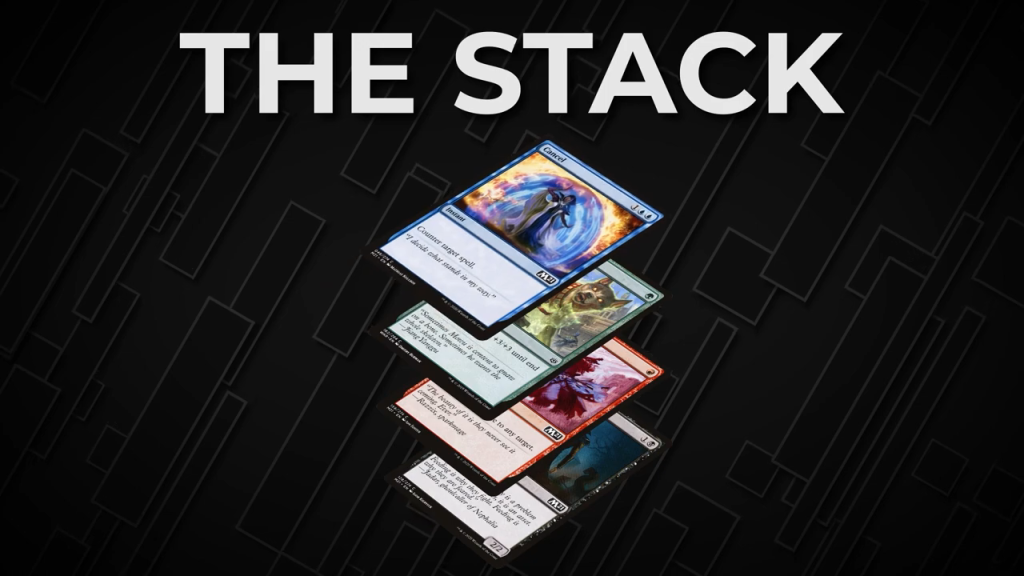
Example 1
Let’s start with some examples. If I cast Walking Corpse during my main phase, it goes on the stack, waiting for you to either respond or let it resolve. If you have no spells or abilities to activate, or you are fine with letting me have the Walking Corpse, it resolves and enters the battlefield.
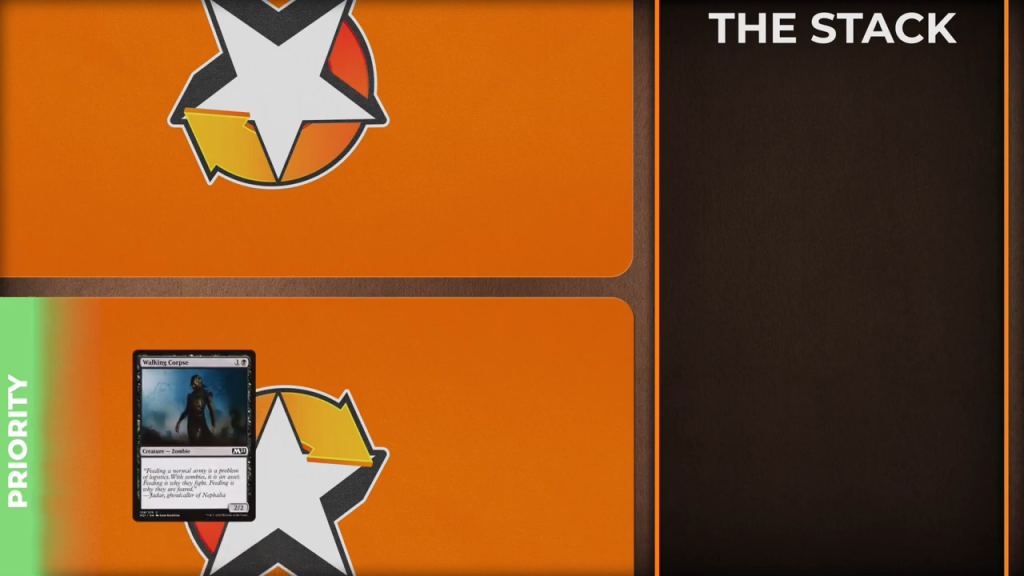
Now let’s say I cast Walking Corpse, it goes on the stack, but you have a Cancel. You can cast Cancel in response. It goes on the stack above Walking Corpse. If I have nothing to respond to that with, the stack resolves with Cancel targeting the Walking Corpse and countering it, leaving me without my creature.
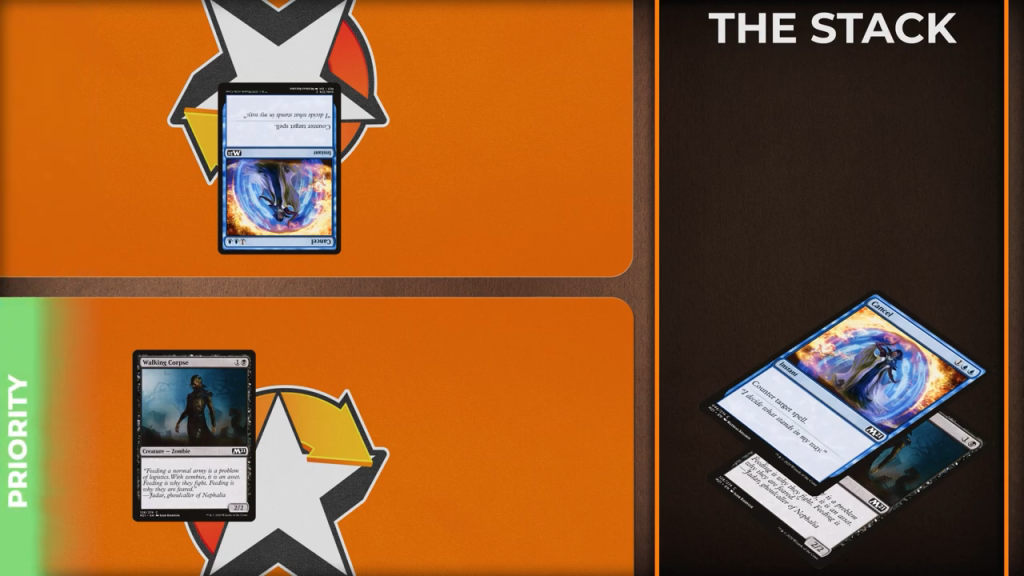
However, if that sequence happens again and I have a Negate, I can respond to the Cancel with the Negate. Then Negate goes on the stack above everything else. If you don’t have any other responses, my Negate targeting your Cancel will resolve, countering it. My Walking Corpse then resolves, as it is the last and only thing on the stack, allowing it to enter the battlefield.
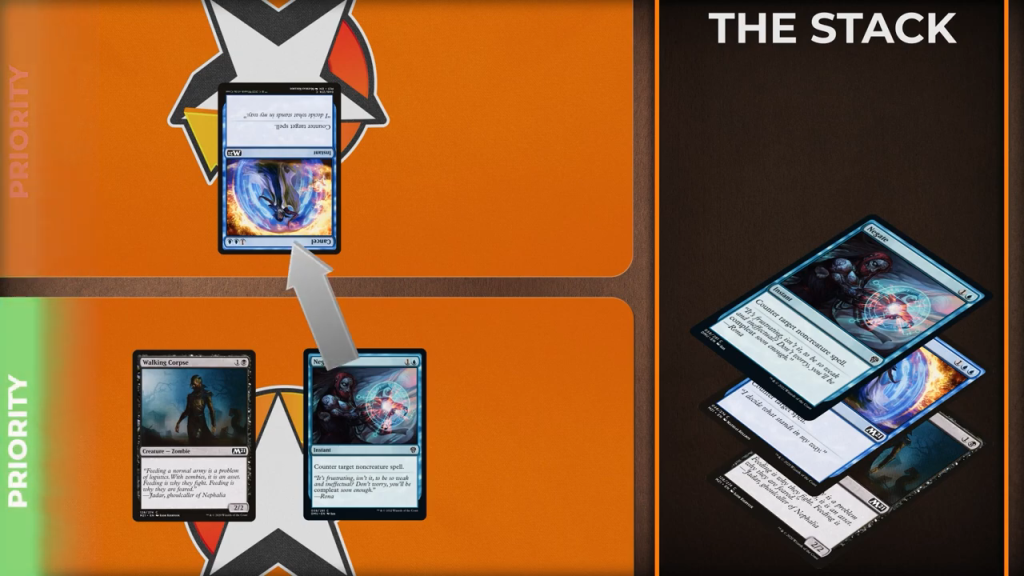
These examples can go on and on as many times as players have spells, each time putting the next spell on top of the stack, then resolving from the top to bottom.
Example 2
Another way to illustrate the top to bottom system is with attacking creatures when both players have instants to cast. Let’s say I’m attacking you with Walking Corpse and you don’t block. I have a Giant Growth in hand and want to get in for more damage, so I cast it before we go to the combat damage step, and it goes on the stack.
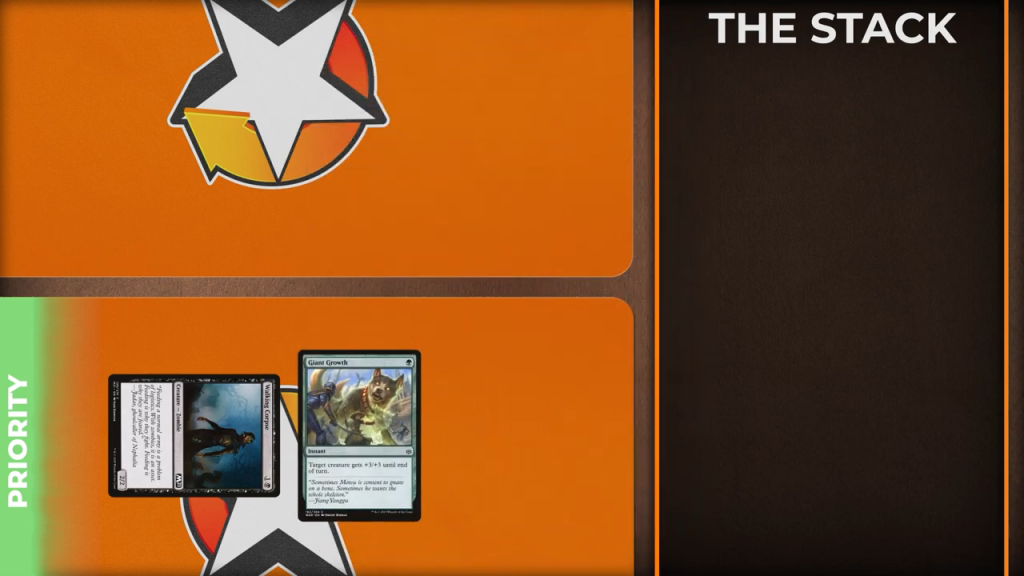
You can now respond, so you can cast Shock, targeting my Walking Corpse. Shock goes on top of the stack. I don’t have any more instants or abilities to respond with, so your Shock resolves first. It deals two damage to my Walking Corpse, which kills it. My Giant Growth doesn’t have a target anymore, so it goes to the graveyard without providing the +3/+3 bonus to anything. Not only do I not get my five damage from the Walking Corpse and the Giant Growth, but I also miss out on the two damage I could have dealt as well.
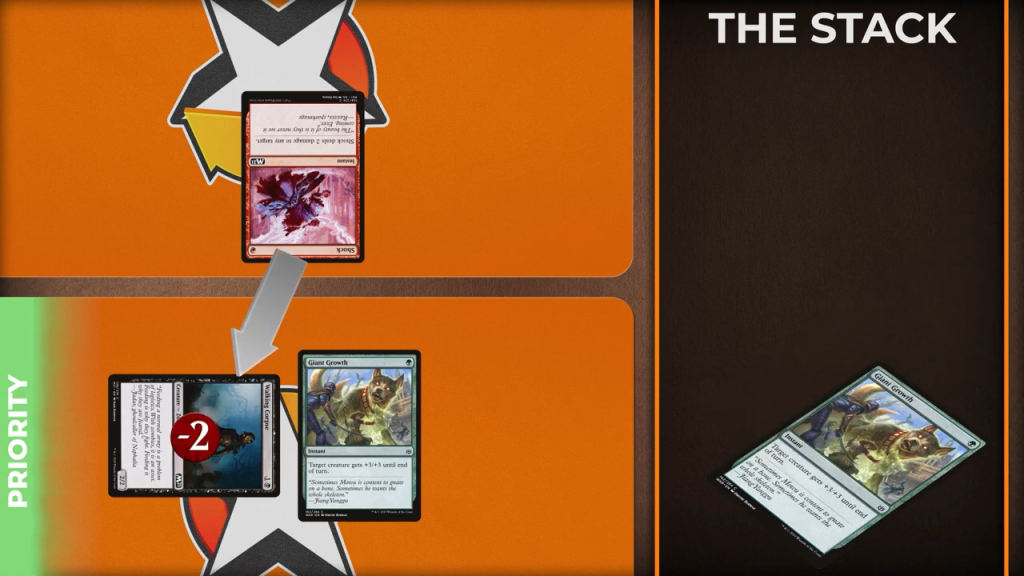
Now let’s say you are at two life and I attack with my Walking Corpse. You cast Shock targeting Walking Corpse before damage happens so that you don’t lose the game. I respond with Giant Growth, putting it on top of the stack. When you don’t have another response, Giant Growth resolves on my Walking Corpse, making it a 5/5 until end of turn. Then Shock resolves, doing two damage to my Walking Corpse. Because the Walking Corpse is still alive, it deals five damage to you, winning me the game.
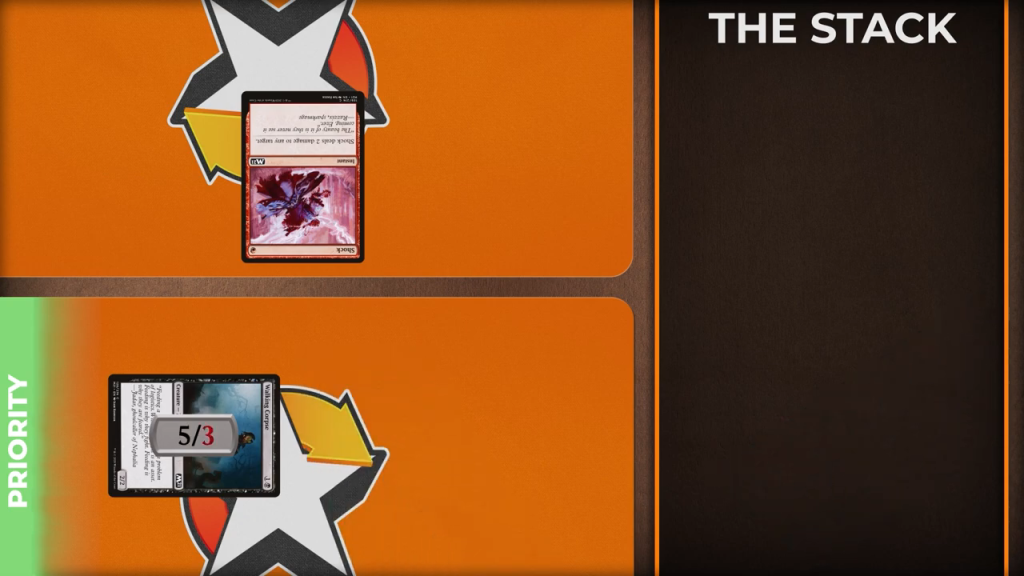
Lands and Priority
Notably, playing a land doesn’t use the stack. You can play a land during your main phase, and it is now on the battlefield, ready to tap for mana. However, if the land has an “enters the battlefield” trigger, that ability will go on the stack, giving your opponent a chance to respond. If I put a basic Island onto the battlefield, I can go right ahead and tap it for mana maintaining priority.
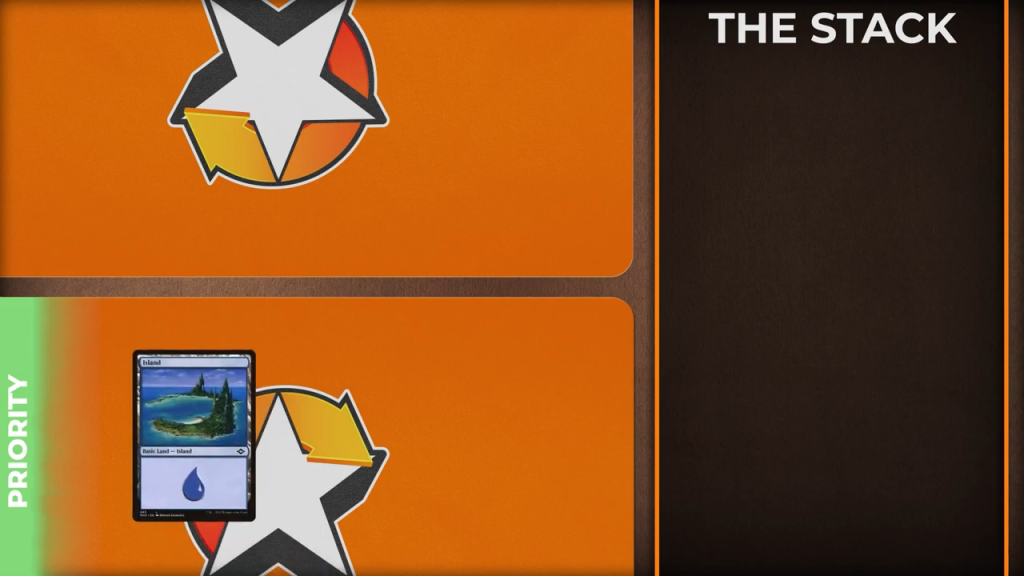
If I played Radiant Fountain, the trigger of gaining two life will go on the stack and my opponent can respond with a spell or ability. The same goes for cards like Temple of Epiphany. My opponent can’t respond to me putting the land on the battlefield, but they can respond to the scry trigger. Another important point to remember is that, when a spell resolves, priority returns to the player who had priority before the spell went on the stack.
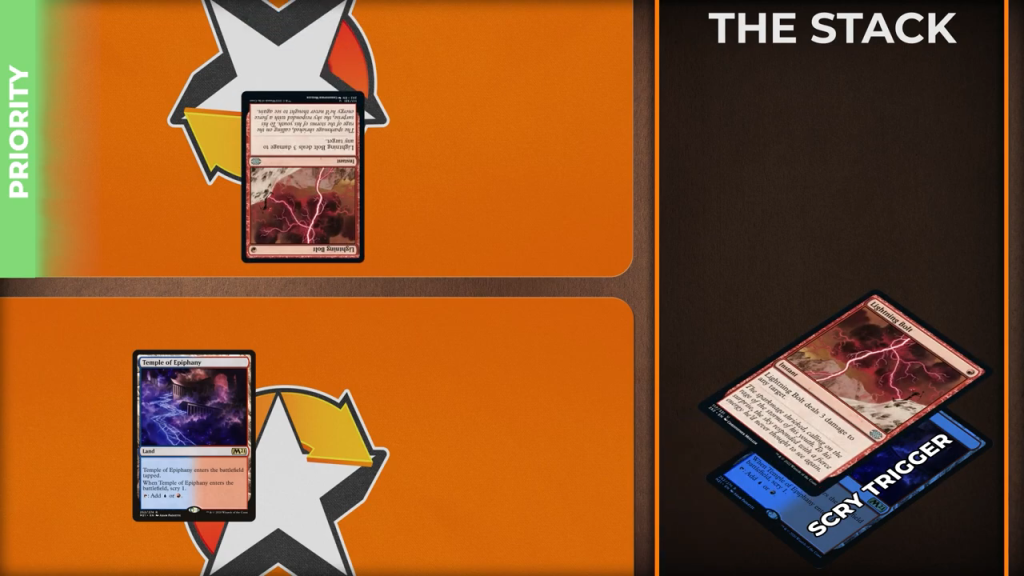
Priority in Action
When I resolve Walking Corpse and it enters the battlefield, I can then cast another spell, activate an ability, or pass priority to try to move to the next phase. A great example of how priority works is when a player cast a planeswalker. If I cast Garruk, Unleashed, he goes on the stack. Maybe you don’t have a counterspell like Cancel to stop him from entering the battlefield, but you do have an instant like Feed the Serpent that can destroy a planeswalker. You’d like to be able to destroy the Garruk before he gets to make a Beast token, but you don’t have priority to cast your spell yet. My Garruk will resolve and enter the battlefield because it’s my turn.
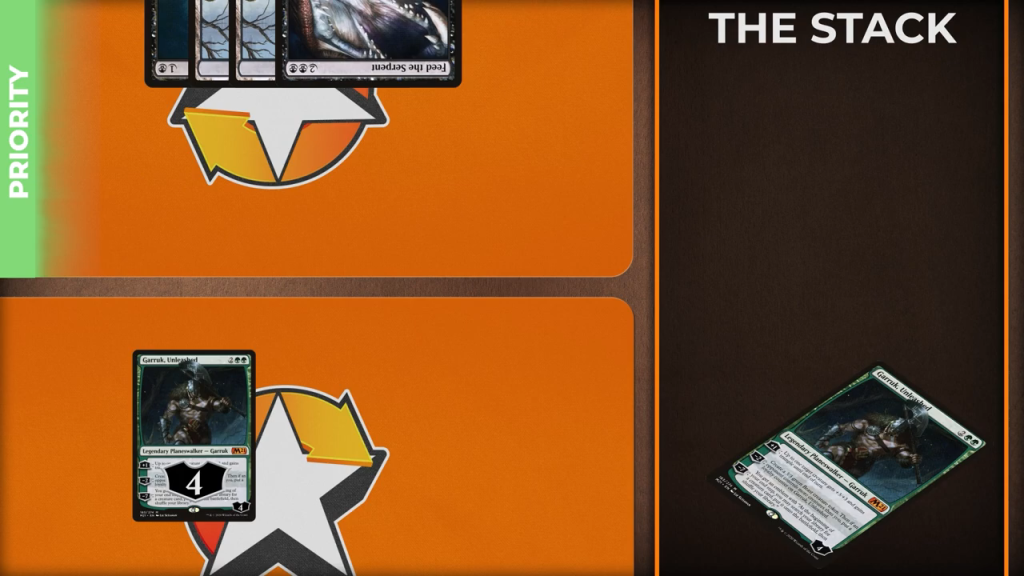
I have priority, so I can activate Garruk and make a Beast. Once the ability goes on the stack, you gain priority, and you can cast Feed the Serpent, which destroys Garruk. The ability for Garruk is still on the stack, so once Feed the Serpent resolves, I will get a Beast token under my control.
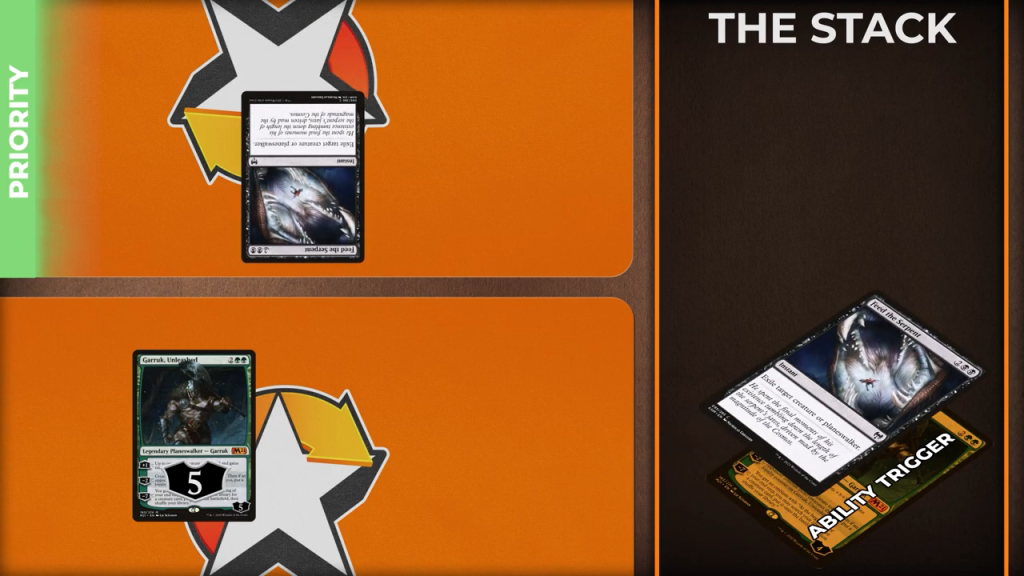
A huge part of playing Magic is choosing when to cast your spells to get the most out of them while minimizing what your opponent can do with theirs.
Magic is built around the stack and priority, but most of it can be remembered by saying “first in, last out.” As long as you visualize or process the stack, you can see how any interaction plays out.
Thanks for reading this How to Play Magic: The Gathering article, and we hope you found it helpful. For more in this series, check out the article listed below, and make sure to visit StarCityGames.com for one of the best selections of Magic: The Gathering singles, sealed product, news, and deck ideas in the world.
Next Article: Slang
Previous Article: Keywords

